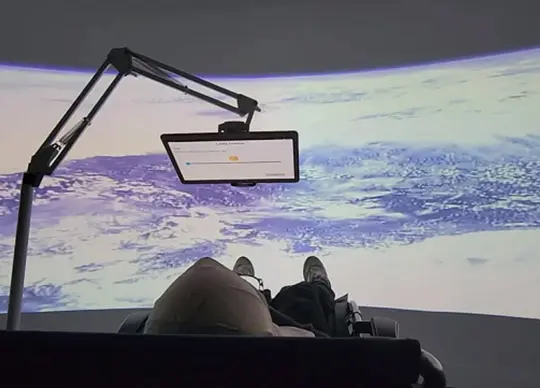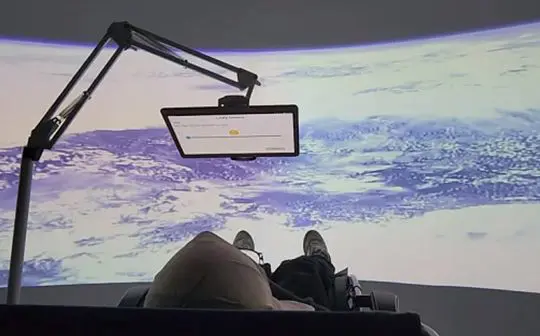
The Australian Research Council Centre of Excellence in Plants for Space (CoE-P4S) promises to play a pivotal role in solving this culinary conundrum – using plants grown in space. This initiative – a collaboration between five Australian Universities – is set to revolutionise space food production, with the involvement of 38 national and international partners, including NASA and AXIOM.
The University of Melbourne’s dedicated team for CoE-P4S is led by Professor Sally Gras, Professor Michelle Watt and myself, and has expertise across plant biology, food engineering and processing, digital agriculture and sensory analysis of food and beverages.
A team of researchers from the Digital Agriculture, Food and Wine Research group (DAFW), led by myself and postdoctoral researchers Dr Claudia Gonzalez Viejo and Dr Eden Tongson, are bringing cutting-edge digital technologies and artificial intelligence (AI) into the equation to address critical aspects of space food production and astronauts’ acceptance of these innovative food solutions.
One of our main aims is to find ways to supply fresh food to astronauts in space. To do this, we’re developing small-scale robotic farming systems, aptly named ‘Farmbots’, which we have located at the Student Precinct on the University of Melbourne’s Parkville Campus.
These Farmbots, which use open-source hardware and software, can incorporate digital sensors, including a low-cost electronic nose (E-nose) co-developed by our team at DAFW and Associate Professor Ranjith Unnithan and Bryce Widdicombe from the University of Melbourne’s Department of Electrical and Electronic Engineering (EEE), to closely monitor the growth and development of leafy green vegetables.
The E-nose is an array of nine gas sensors joined to a printed circuit board designed by the EEE group that is portable and can directly send data to the cloud. It was integrated into the Farmbot by computer science students supervised by myself and Dr Nir Lipovetzky.

Leafy greens like beetroot, coriander, kale, mixed lettuce, sweet basil and Thai basil, which are the easiest test plants for what would become part of astronauts’ diets, were grown and monitored in early 2023. We assessed the sensory perception of eating these veggies in simulated zero-gravity conditions using ‘zero-gravity chairs’.
These reclinable chairs are the closest simulation we have for the effects of zero gravity on our senses. They are placed in space-immersive environments, with participants enjoying the leafy greens in front of a 180-degree screen projecting breathtaking views of Earth from space.
The participants’ responses are recorded on Tablet PCs using our BioSensory App©. This app non-invasively records videos of the participants’ emotional responses using the Tablet PC’s cameras. It then analyses facial recognition and physiological changes, like heart rate, blood pressure and postural adjustments using the vision and AI algorithms we’ve developed for this kind of analysis.
We are also employing non-destructive chemical fingerprinting analysis using near-infrared spectroscopy and collecting physiological data at the plant-by-plant level from the three Farmbots in the Student Precinct.
This data, combined with the E-noses and biometric responses to visual, aroma and taste characteristics of leafy greens, will be used to create computer models of the plants, known as digital twins (DT).
These DTs will be invaluable for the evaluation of genetically modified (GM) plants the Centre of Excellence is developing to produce not only food but also pharmaceuticals and materials like plastics for astronauts during their journey or on Moon or Mars bases.
We can assess the flavour, aroma and acceptability of these GM plants and their food and beverage products through the DT, eliminating the need for conventional human sensory analysis.
These DTs can be also used later in space missions to monitor plants and use our AI tools to modify growth conditions, like light, watering and nutrient availability that may change sensory characteristics – aiding crop production and the variability of texture, flavour and aromas.
These changes will also facilitate the 3D printing of food with the aim of decreasing menu fatigue.
This research is one giant leap towards making long-term space exploration a delicious and nutritious reality. We are excited to be at the forefront of this cosmic culinary adventure, bringing us one step closer to reaching for the stars by having a stellar menu.





